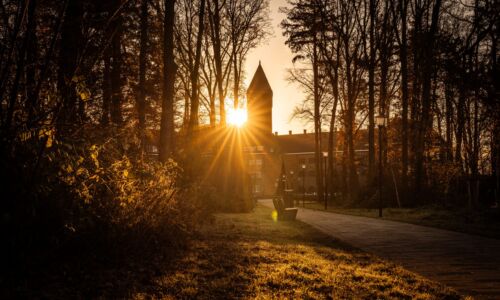People want to live where the Waal flows
-
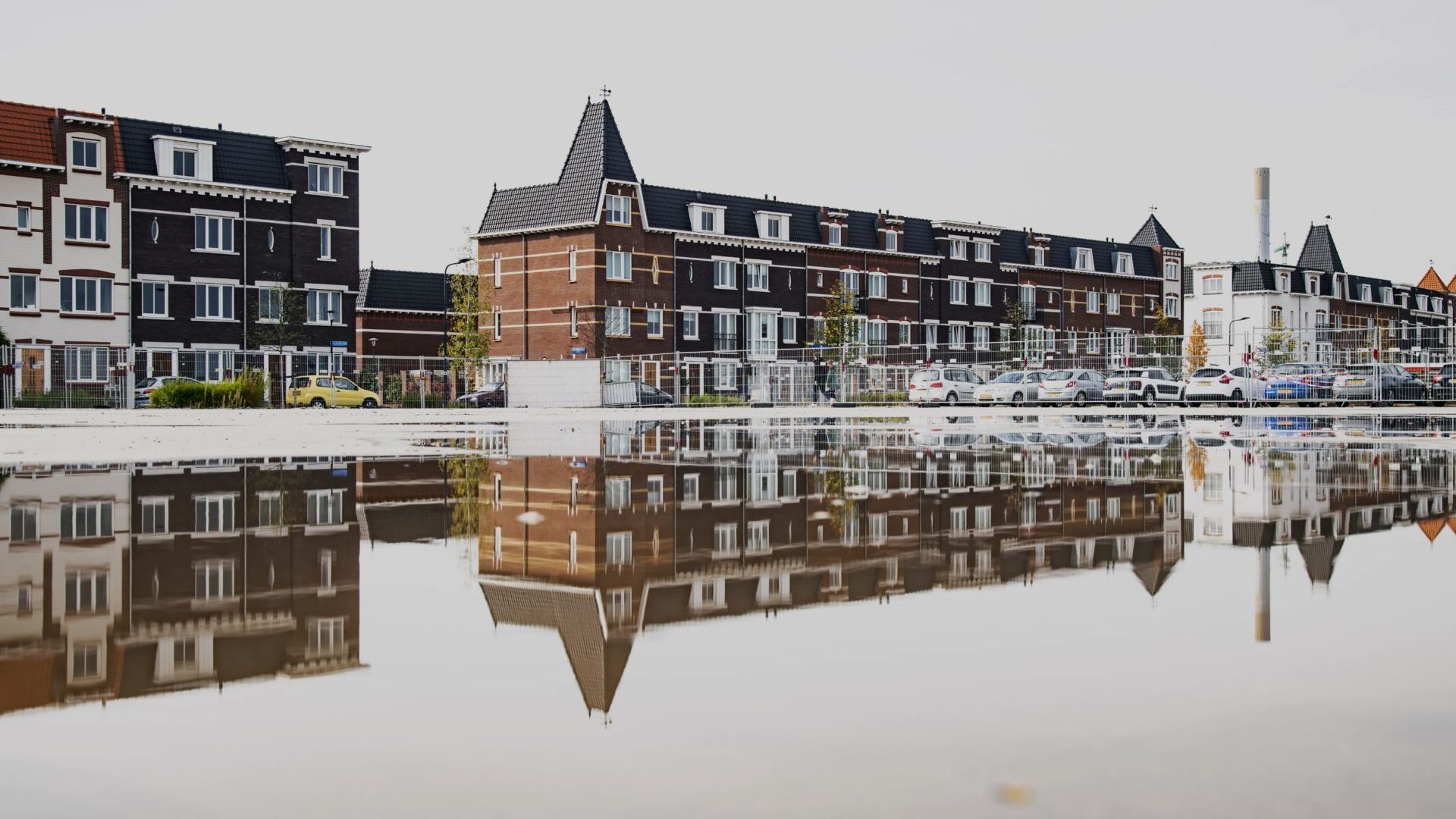 The new neighbourhood Batavia, located in Nijmegen-West. Photo: Paul Rapp
The new neighbourhood Batavia, located in Nijmegen-West. Photo: Paul Rapp
Once upon a time Nijmegen stopped at the Waalkade. But with the new city island and the development of Nijmegen-Noord, the river is increasingly becoming part of the city. And the houses in this area are popular.
When Dave Willems looks out of his kitchen window, he sees a long line of ships continuously sailing past on one of the busiest waterways in Europe. The Radboud Reflects cultural programmer lives in one of the new houses in Batavia, the nearly completed neighbourhood between the Weurtseweg and the Waal.
This open view of the river is temporary by the way: right in front of Willems’ house, the land is being prepared for a large apartment complex. On the building site, the iron framework for the foundations has already been put in place. ‘But we knew this when we bought the house,’ he says.
‘When you run along the river, the landscape glides past much more slowly. The panoramic view has a calming effect’
After obtaining a Bachelor’s in Engineering in Eindhoven, Willems (35) came to Nijmegen to complete a Master’s in Philosophy. He’s worked as cultural programmer for Radboud Reflects for 4 years. Like many young couples, two years ago he and his girlfriend began to look for a house in the overcrowded Nijmegen housing market.
The most important thing was that their new home should not be too far from the city centre. The fact that they ended up in a neighbourhood along the river was an added advantage. ‘Although in my experience, the Waal was always nearby,’ says Willems. ‘Even when we lived in an apartment near Central Station.’
‘I often go jogging across the city island. It’s a completely different experience to running through the city. The streets feel like visual tunnels, with lots of obstacles, but when you run along the river, the landscape glides past much more slowly. The panoramic view has a calming effect.’
Five cars a day
The neighbourhoods along the Waal – both on Waalfront to the West of the city centre and on the other side of the river – have really grown in popularity in recent years. And yet moving to the Northern shore of the Waal was not Willems’ first choice. ‘The river becomes a barrier to going into the city. Lent also has a completely different atmosphere – it’s a village surrounded by VINEX suburbs. I’d really miss the dynamic of the city.’
Lotte Krabbenborg (39) doesn’t deny that Lent lacks the urban feel. But whereas Willems sees this as a disadvantage, Krabbenborg is happy with the quiet and the space across the Waal. Two years ago, the sociologist and her family exchanged their home on the busy Groenestraat for a large detached house in the old part of Lent. ‘If you see five cars drive by in the street, it’s a busy day. It’s great for the children.’
Krabbenborg doesn’t see the Waal as a barrier. On foot, it takes her half an hour to get to town, where her oldest son goes to school. The river does mark a separation between her work and private life. ‘After a day at the University, I enjoy cycling home across the windy Waalbrug. It helps me clear my head.’ The work on the bridge makes the crossing even more dynamic – there’s so much to see. Her son enjoys looking at the river as they cycle: ‘His first word was ‘boat’.’
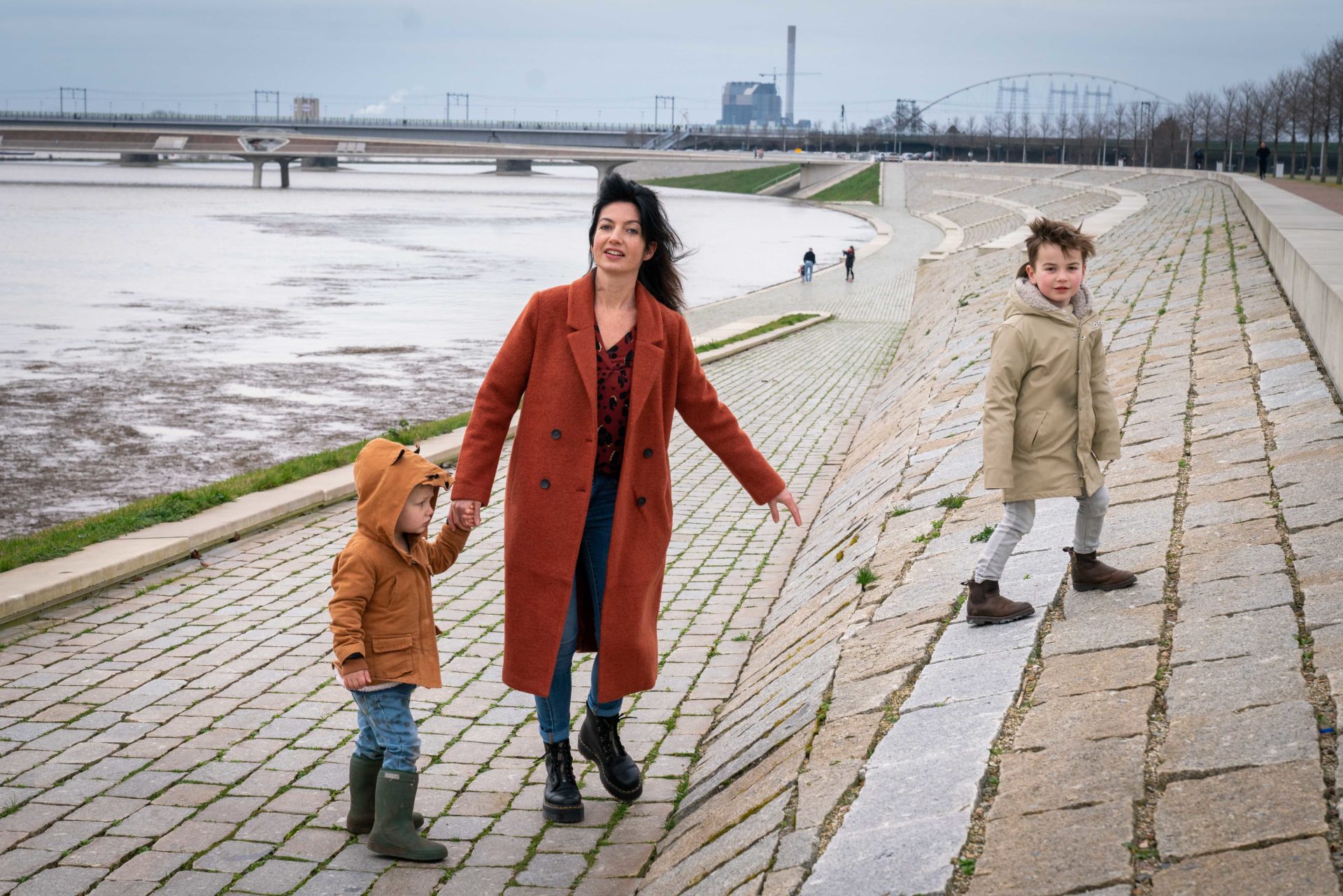
Krabbenborg lives in the heart of Nijmegen-Noord, also known as the Waalsprong, where the Municipality is planning a lot more construction in coming years, to meet the high demand for housing. At the moment the district has a little fewer than 7000 houses, with another 5000 planned over the next ten years. The Municipality is looking for options to increase this figure even further.
Krabbenborg hasn’t studied these expansion plans very carefully. ‘But I hope there’ll be enough open space left. My son learned to cycle on an open field next to the railway bridge. I heard that the Municipality is planning to build a five-storey apartment block there.’
Biodiversity
Krabbenborg’s concerns are shared by many Lent inhabitants. If you look at the future map of ‘Noord’, you get the impression that the entire area will soon be built up, from the Waal beaches to Oosterhout and from the Oversteek bridge to the Zandse Plas.
This is partially true, admits Mathieu Schouten. As project leader, he works on behalf of the Municipality on the future vision for Nijmegen. ‘Nijmegen-Noord will largely be a residential area. But with more emphasis on its environmental value than in the past. These will be urban areas with mixed use, including nature, habitation, work and other facilities.’ Green areas are also included in the Hof van Holland, with its shops and facilities, intended to become the centre of Nijmegen-Noord.
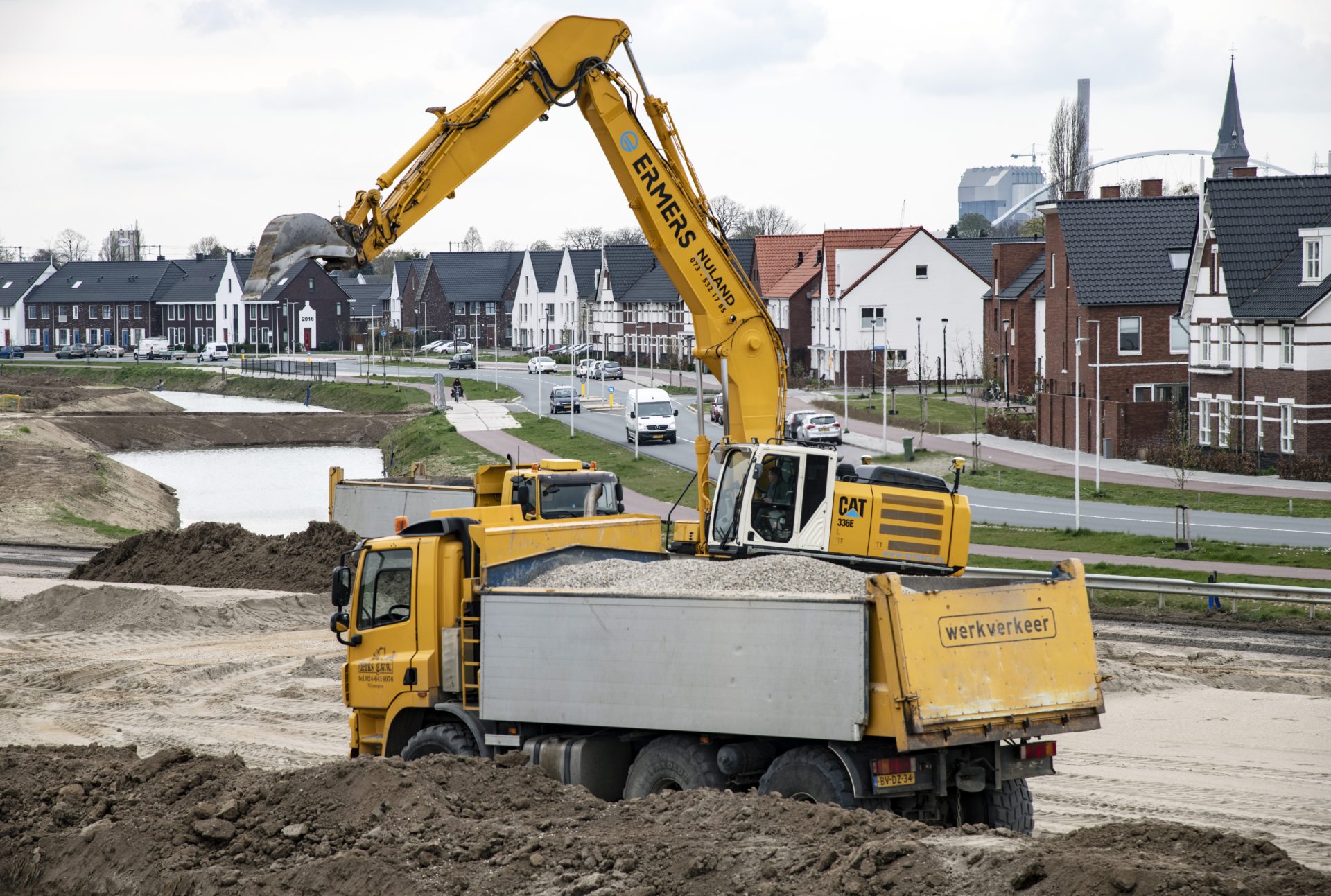
‘This all used to be agricultural land,’ says Schouten. ‘We now know that there is more biodiversity in cities than in modern agricultural areas. And we want to stimulate this, for example by providing nesting areas for birds.’ Schouten points to the blue belt surrounding Lent, with the Oosterhout’s Plas, Lentse Plas and Zandse Plas. ‘These natural areas must be protected.’
Then there is, of course, the ‘fantastic open space’ offered by the river park, says Schouten. ‘For years, the river was seen as an obstacle – and a cultural boundary between the Catholic South and the Protestant North. But we’re now crossing this boundary in all kinds of different ways, by creating an island feeling and by inviting other parties to organise events that are interesting to all city dwellers, like the Four Days Marches.’
Even though people in the city are sometimes disparaging about the northern shore of the Waal – ‘You can get used to anything except Lent’ – Schouten doesn’t think Nijmegen-Noord has an image problem. ‘The only people who say that are those who don’t live here.’
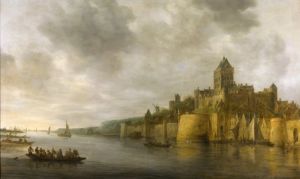
How Nijmegen grew along the shores of the Waal
It’s not very surprising that the Romans chose the current location of Nijmegen to build a settlement in the 1st century BC. Dolly Verhoeven, Professor of the History of Gelderland: ‘The river made it possible to transport troops and provisions, and the hill offered safety.’ With an eye to the much-desired invasion of Germania, which never materialised, Nijmegen became a military base camp.
During the Batavian Revolt (69-70), the Batavian Roman settlement on the Valkhof was burned to the ground, following which the Romans build a new city to the West of the previous settlement. ‘On the current location of the Honig factory we found temples and baths from that period.’
In the Middle Ages, the city once again shifted towards its present-day centre, and in the thirteenth century, walls were built around it. ‘The inhabitants, including many skippers and merchants, greatly profited from the Waal as a transport route,’ says Verhoeven. ‘Trade took off, both towards Cologne, and towards the West and the North.’
At first the city walls, later replaced by ramparts, offered safety, but in following centuries they were increasingly experienced as an obstacle. ‘The population grew and the city became overcrowded. Those who could afford it moved away from the stinking city with its river that was like an open sewer.’
It was only in 1874 that the ramparts were demolished and Nijmegen was able to expand. This was also the time when the City on the Waal acquired bridges: first a railway bridge and then, in 1936, a road bridge. ‘But the impoverishment of the Benedenstad on the Waal continued nevertheless. The neighbourhood was spared during World War II, only to be largely demolished and renovated afterwards.’ For a long time the Benedenstad was a desolate place, and it was only in the 1970s that new buildings appeared and the area once again became attractive to live in. ‘Even though it’s a pity so many old buildings were demolished.’
The historian is happy to see that the other side of the Waal is once again becoming part of the city. ‘For centuries, the two shores were only connected by a chain ferry. The railway bridge and the road bridge were a great step forward. Thanks to the new bridge and the development around the Waal, the city is really flourishing.’


